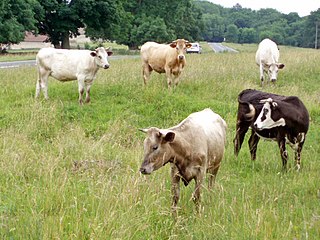
In law, common law is that body of law derived from judicial decisions of courts and similar tribunals. The defining characteristic of “common law” is that it arises as precedent. In cases where the parties disagree on what the law is, a common law court looks to past precedential decisions of relevant courts, and synthesizes the principles of those past cases as applicable to the current facts. If a similar dispute has been resolved in the past, the court is usually bound to follow the reasoning used in the prior decision. If, however, the court finds that the current dispute is fundamentally distinct from all previous cases, and legislative statutes are either silent or ambiguous on the question, judges have the authority and duty to resolve the issue. The court states an opinion that gives reasons for the decision, and those reasons agglomerate with past decisions as precedent to bind future judges and litigants. Common law, as the body of law made by judges, stands in contrast to and on equal footing with statutes which are adopted through the legislative process, and regulations which are promulgated by the executive branch. Stare decisis, the principle that cases should be decided according to consistent principled rules so that similar facts will yield similar results, lies at the heart of all common law systems.
Common Era or Current Era (CE) is one of the notation systems for the world's most widely used calendar era. BCE is the era before CE. BCE and CE are alternatives to the Dionysian BC and AD system respectively. The Dionysian era distinguishes eras using AD and BC. Since the two notation systems are numerically equivalent, "2019 CE" corresponds to "AD 2019" and "400 BCE" corresponds to "400 BC". Both notations refer to the Gregorian calendar. The year-numbering system utilized by the Gregorian calendar is used throughout the world today, and is an international standard for civil calendars.

Lisp is a family of computer programming languages with a long history and a distinctive, fully parenthesized prefix notation.
Originally specified in 1958, Lisp is the second-oldest high-level programming language in widespread use today. Only Fortran is older, by one year. Lisp has changed since its early days, and many dialects have existed over its history. Today, the best known general-purpose Lisp dialects are Clojure, Common Lisp, and Scheme.

A language family is a group of languages related through descent from a common ancestral language or parental language, called the proto-language of that family. The term "family" reflects the tree model of language origination in historical linguistics, which makes use of a metaphor comparing languages to people in a biological family tree, or in a subsequent modification, to species in a phylogenetic tree of evolutionary taxonomy. Linguists therefore describe the daughter languages within a language family as being genetically related.

The tragedy of the commons is a term used in environmental science to describe a situation in a shared-resource system where individual users acting independently according to their own self-interest behave contrary to the common good of all users by depleting or spoiling that resource through their collective action. The concept originated in an essay written in 1833 by the British economist William Forster Lloyd, who used a hypothetical example of the effects of unregulated grazing on common land in Great Britain and Ireland. The concept became widely known as the "tragedy of the commons" over a century later due to an article written by the American ecologist and philosopher Garrett Hardin in 1968. In this modern economic context, commons is taken to mean any shared and unregulated resource such as atmosphere, oceans, rivers, fish stocks, roads and highways, or even an office refrigerator.

Conjunctivitis, also known as pink eye, is inflammation of the outermost layer of the white part of the eye and the inner surface of the eyelid. It makes the eye appear pink or reddish. Pain, burning, scratchiness, or itchiness may occur. The affected eye may have increased tears or be "stuck shut" in the morning. Swelling of the white part of the eye may also occur. Itching is more common in cases due to allergies. Conjunctivitis can affect one or both eyes.
Chinese surnames are used by Han Chinese and Sinicized ethnic groups in Mainland China, Hong Kong, Macau, Malaysia, Brunei, Taiwan, Korea, Singapore, Indonesia, Philippines, Vietnam and among overseas Chinese communities. In ancient times two types of surnames existed, namely xing or clan names, and shi or lineage names.

The common cold, also known simply as a cold, is a viral infectious disease of the upper respiratory tract that primarily affects the nose. The throat, sinuses, and larynx may also be affected. Signs and symptoms may appear less than two days after exposure to the virus. These may include coughing, sore throat, runny nose, sneezing, headache, and fever. People usually recover in seven to ten days, but some symptoms may last up to three weeks. Occasionally those with other health problems may develop pneumonia.

Arson is the crime of willfully and maliciously setting fire to or charring property. Though the act typically involves buildings, the term arson can also refer to the intentional burning of other things, such as motor vehicles, watercraft, or forests. The crime is typically classified as a felony, with instances involving a greater degree of risk to human life or property carrying a stricter penalty. A common motive for arson is to commit insurance fraud. In such cases, a person destroys their own property by burning it and then lies about the cause in order to collect against their insurance policy.
Common-law marriage, also known as sui iuris marriage, informal marriage, marriage by habit and repute, or marriage in fact, is a legal framework in a limited number of jurisdictions where a couple is legally considered married, without that couple having formally registered their relation as a civil or religious marriage. The original concept of a "common-law marriage" is a marriage that is considered valid by both partners, but has not been formally recorded with a state or religious registry, or celebrated in a formal religious service. In effect, the act of the couple representing themselves to others as being married, and organizing their relation as if they were married, acts as the evidence that they are married.

Lonnie Corant Jaman Shuka Rashid Lynn, better known by his stage name Common, is an American rapper, actor and chef. Common debuted in 1992 with the album Can I Borrow a Dollar? and maintained an underground following into the late 1990s, after which he gained mainstream success through his work with the Soulquarians.

Black-and-white images combine black and white in a continuous spectrum, producing a range of shades of gray.
The Bachelor of Laws is an undergraduate degree in law originating in England and offered in Japan and most common law jurisdictions—except the United States and Canada—as the degree which allows a person to become a lawyer. It historically served this purpose in the U.S. as well, but was phased out in the mid-1960s in favor of the Juris Doctor degree, and Canada followed suit.

Agaricus bisporus is an edible basidiomycete mushroom native to grasslands in Europe and North America. It has two color states while immature—white and brown—both of which have various names. When mature, it is known as portobello mushroom.
In biology, a common name of a taxon or organism is a name that is based on the normal language of everyday life; this kind of name is often contrasted with the scientific name for the same organism, which is Latinized. A common name is sometimes frequently used, but that is by no means always the case.

Pancreatic cancer arises when cells in the pancreas, a glandular organ behind the stomach, begin to multiply out of control and form a mass. These cancerous cells have the ability to invade other parts of the body. There are a number of types of pancreatic cancer. The most common, pancreatic adenocarcinoma, accounts for about 85% of cases, and the term "pancreatic cancer" is sometimes used to refer only to that type. These adenocarcinomas start within the part of the pancreas which makes digestive enzymes. Several other types of cancer, which collectively represent the majority of the non-adenocarcinomas, can also arise from these cells. One to two percent of cases of pancreatic cancer are neuroendocrine tumors, which arise from the hormone-producing cells of the pancreas. These are generally less aggressive than pancreatic adenocarcinoma.

The common raven, also known as the northern raven, is a large all-black passerine bird. Found across the Northern Hemisphere, it is the most widely distributed of all corvids. There are at least eight subspecies with little variation in appearance, although recent research has demonstrated significant genetic differences among populations from various regions. It is one of the two largest corvids, alongside the thick-billed raven, and is possibly the heaviest passerine bird; at maturity, the common raven averages 63 centimetres in length and 1.2 kilograms in mass. Common ravens can live up to 21 years in the wild, a lifespan surpassed among passerines by only a few Australasian species such as the satin bowerbird and probably the lyrebirds. Young birds may travel in flocks but later mate for life, with each mated pair defending a territory.
Commonly, "cousin" refers to a "first cousin", people whose most recent common ancestor is a grandparent. A first cousin used to be known as a cousin-german, though this term is rarely used today.
A company, abbreviated as co., is a legal entity made up of an association of people, be they natural, legal, or a mixture of both, for carrying on a commercial or industrial enterprise. Company members share a common purpose, and unite to focus their various talents and organize their collectively available skills or resources to achieve specific, declared goals. Companies take various forms, such as:
Real estate is "property consisting of land and the buildings on it, along with its natural resources such as crops, minerals or water; immovable property of this nature; an interest vested in this (also) an item of real property, buildings or housing in general. Also: the business of real estate; the profession of buying, selling, or renting land, buildings, or housing."
It is a legal term used in jurisdictions whose legal system is derived from English common law, such as India, England, Wales, Northern Ireland, United States, Canada, Pakistan, Australia, and New Zealand.











